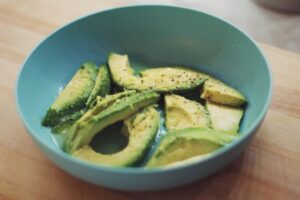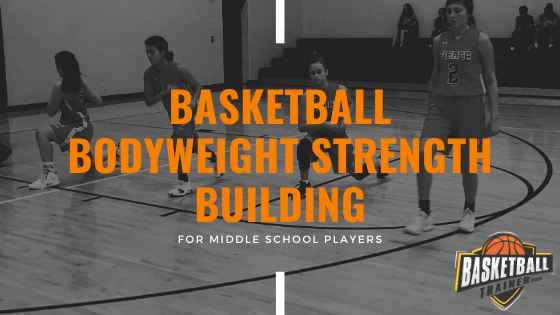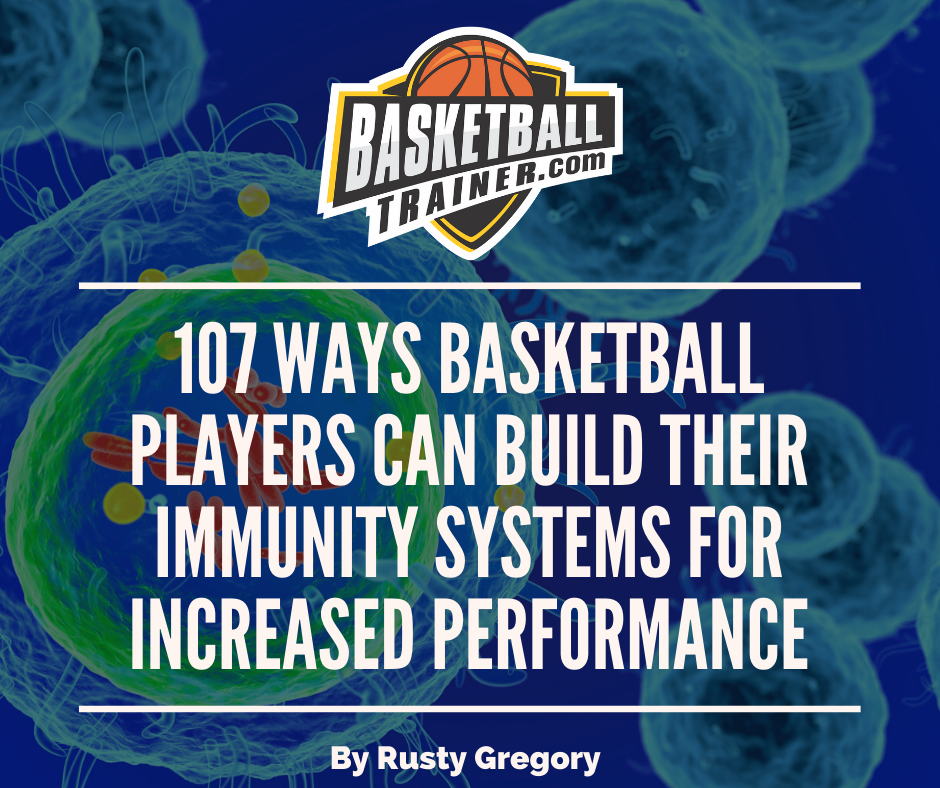
****This article was written a week before Covid-19 spread further and increased social distancing became the new normal. When we return to basketball… we will have some new best practices to reduce infection. ****
 I am a basketball trainer, a select coach and also a basketball thought leader. I am not a scientist or doctor but I do try to bridge the info available to my gym and clientele to help protect them, my family and myself from some of the risks like Covid – 19 and some of the other viruses and infections that basketball players face.
I am a basketball trainer, a select coach and also a basketball thought leader. I am not a scientist or doctor but I do try to bridge the info available to my gym and clientele to help protect them, my family and myself from some of the risks like Covid – 19 and some of the other viruses and infections that basketball players face.
“Let’s take advantage of the Coronavirus threat to make our game safer for our players and their families.”
Basketball and several school/club athletics have long been a vehicle of infectious disease. We need to use the current environment of both fear and reality to help make our gyms and our athletes safer not only to themselves but to the general public. While more research and recommendations come in on the scope of this virus we can all take steps to be better on and off the court.
Fear vs Facts in Basketball & Infections
The truth is that we know far less than we would like to know about our current situation. Some fear is likely imagined. Some fear is real. And some fear may be understated. We don’t want to let fear rule us, but we do want to use the best available facts to protect our children and our families. We are trying to rely on information from scientists and doctors and not focus on the information from political parties and social media. While we all recognize teen vaping, suicide, driving and many other pursuits are more dangerous than the current risk of Covid-19, risks can change in a pandemic environment very quickly. Fear without panic can lead us to some more rational decisionmaking and healthier practices. It is a fluid situation that requires ongoing monitoring. We are currently monitoring CDC, medical and scientific sources. Here are some of the facts as we know them:
Reduce Infection While Playing Basketball – 13 Steps To Win
Reduce Touching Moments in Basketball
From this point forward we will discourage handshakes, high fives and also fist bumps. Additionally, the teams we train will skip touching hands at timeouts and end of practices. Tonight’s end of practice was organized by Austin Fierce guard Paige Sitterle.
We know old habits of positive touches will be hard to break, but we will try hard to reduce this behavior substantially.
Increase Handwashing Hygiene Education and Enforcement
All players and parents will wash hands for 30 seconds or more upon entry AND exit of the gym. Ignoring this rule will result in 1 session suspension of training privileges. Want to know what 30 seconds are? Sing Happy Birthday to Me 3 Times. I have witnessed the hand sanitization mania going on and our research indicates it is not as safe as washing hands.
Use hand sanitizer as handwashing becomes unavailable but beware that hands don’t become cut from the alcohol levels and drying nature of sanitizer. Basketball players are already prone to dry hands from the friction of dribbling. If you are sanitizing regularly, consider using a moisturizer as well. We really don’t want cuts on our hands touching balls and the floor and other people. This too is an entry route for the disease. Make Your Own Home Sanitizer? I am not a chemist or a pharmacist but apparently this is less easy than I thought. You make your own decision but again, the answer is clear that washing your hands thoroughly is more effective than this remedy. Here are some comments and thoughts you should first consider:
And on this note… Tito’s Vodka would like you to know that you cannot use their product as a hand sanitizer.
Sanitize The Basketball Environment
Today I will be working on a procedure to daily wash/sanitize every basketball, door handle, toilet seat handle, and applicable countertop. We typically sweep the floor, and it is washed biweekly.
Separate Basketball Sneakers
We recommend that kids bring sneakers to any gym just for basketball and do not wear them in the house. Change at the gym, keep a separate bag and only wear those shoes to play basketball if possible.
Mark Customized Water Bottles
Standard looking water bottles like Hydroflask should be clearly marked and named so that players don’t accidentally drink out of another player’s bottle. Obviously we should not be sharing water bottles in any way.
Eliminate Fever and Nausea In The Gym
From this point until further notice we do not want any child who has had fever or nausea in the previous 36 hours. Yes, I know this might be difficult. But if our environment is extra safe than the average amount of days able to train should actually increase training days available over the course of the year.
Coughing in the Basketball Space
If you have a cough that you are not sure of the source on… stay out of the gym. If a doctor has told you it is allergies, and you know the cough is fine indoors, but a problem outdoors… then please use common sense. Any child coughing will be expected to excuse themselves and go wash their hands regardless of the shoulder/elbow procedure which is our preferred method of covering a cough.
 Control Sneezing
Control Sneezing
In the current environment, we need sneezing to be under control. Any child sneezing will be expected to excuse themselves and go wash their hands regardless of the shoulder/elbow procedure which is our preferred method of sneezing. So yes, if you sneeze 10 times we want you to wash your hands ten times.
Don’t Ignore Staph
I need to know if a player has a confirmed case of staph or MRSA. This is notorious for spreading in the basketball community. Fingernails need to be cut short and a fingernail brush should be used when washing hands at home thoroughly, particularly but not limited to after a bowel movement. Basketballs themselves can also carry staph so we will be disinfecting those.

Additionally, scrapes and scratches caused by sporting activities can damage the cutaneous barrier of the skin thereby allowing microorganisms to infiltrate deeper layers. Therefore, it is important for athletes to keep their skin surface in good condition to prevent skin infections. The scrapes on your children’s arms and knees should be treated with hot water and soap (the hot water helps the soap dissolve more thoroughly Neosporin should also be applied. And of course, a bandage if it is an open wound.
Focus On Immunity Building
Work on raising your immunity systems as a family. Proper sleep, stress reduction, fruits and vegetables, exercise and Vitamin D all help. We will be writing another article on this coming soon. Needless to say, vaping and smoking lower immunity. Over-exercising can as well. Long-distance swimming and running can lower reserves. HIIT (High-Intensity Intermittent Exercise) can help boost immunity and basketball is not only a great HIIT sport but also a massive stress reliever.
Full Disclosure and Confidentiality
I ask that you please be honest with me about possible exposure. Texting is likely the most secure online way to do so. My phone is kept secure and even my family does not know my passwords because of my access to health info of our players. By law I would need to be honest with CDC etc… but I know we will all be on the same page at that point.
 Face Touches
Face Touches
This is going to be ridiculously hard. We are going to try helping the kids reduce touching their faces, but I did this once and frankly, I was concerned that it increased touches. Like telling someone not to yawn, I felt it increased the negative behavior. If some parent wants to keep track, let me know and we can do an experiment. We would really like to stop this to reduce Pink Eye and conjunctivitis in our athletes.
Stay Home if Sick
Let’s stop pressuring kids to play and practice sick and injured. Stay home. As coaches, many of us are guilty of this. It is really difficult to know when your kid needs a nudge off youtube and into the gym based on some of the creative stories we have been told. As bosses, coaches, and parents most of us have made mistakes in all directions on this topic. For the time being, let’s err on the side of caution. And yes, we may be taken advantage of. Discuss the importance of truth and health with your child.
Know Corona-Virus (Covid-19) Symptoms
(All direct from WHO report)
People with COVID-19 generally develop signs and symptoms, including mild respiratory symptoms and fever, on an average of 5-6 days after infection (mean incubation period 5-6 days, range 1-14 days). As of 20 February 2020 and based on 55,924 laboratory-confirmed cases [in China], typical signs and symptoms include:
Fever (87.9%)
Dry cough (67.7%)
Fatigue (38.1%)
Sputum production (33.4%) (a mixture of saliva and mucus coughed up from the respiratory tract)
Shortness of breath (18.6%)
Sore throat (13.9%)
Headache (13.6%)
Joint pain (14.8%)
Chills (11.4%)
Nausea or vomiting (5.0%)
Nasal congestion (4.8%)
Diarrhea (3.7%)
Hemoptysis (0.9%) (coughing up of blood or blood-stained mucus from the bronchi, larynx, trachea, or lungs)
Conjunctival congestion (0.8%)

Health Tips For Outside of Our Gym
1. Athletes Foot and Gym Showers – while we don’t have showers… this is a common area for infections to grow. Use sandals and dry feet thoroughly, checking between toes for cuts or infection. Athlete’s foot can become an entry point for staph infections so it is serious. 15% to 25% of the population is likely to have athlete’s foot at any one time.
2. Mat sports. I have read some disturbing health info on mat sports in gyms… I think it should be shared for family decisions and awareness. These can come via basketball but are more common in sports like wrestling. I share not to scare but to increase awareness that a problem outside our gym can move inside our gym and want you on the lookout. https://www.ncbi.nlm.nih.gov/pmc/articles/PMC1071398/
3. Hand washing standards should be family rules now if possible. I understand the challenges of enforcement, but that does not excuse us from trying diligently. Below is an infographic from WHO on proper handwashing techniques. Here is the link to the CDC Guide to Family Handwashing.

4. Use disinfectant wipes as you travel about town and touch shopping carts etc.
5. Try to use knuckles to turn off lights as you are less likely to touch your face with them.
6. Consider how you give or receive payment. Cash can carry the virus. Credit and debit card terminals can carry it.
7. Disinfect your phones and laptops or Chromebooks. Apple now says you can safely clean your iPhone with disinfectant wipes, after previously advising against it. Apple has updated its product guidelines to say that it’s OK to clean devices with 70% isopropyl alcohol or Clorox Disinfectant Wipes. Please take a look at the below experiment that teachers did with kids. Note the Chromebook photo on the right. Teachers had students handle bread and then bag it. They then waited and photographed after 3-4 weeks. Also, notice the difference between the washed hands bread and sanitized bread.

Basketball Wellness: Why We Need It
- All illness can be reduced. Team performance may take a hit for a day but overall strength and participation should rise by above manageable practices.
- We have a moral responsibility as leaders (coaches and athletes) to have the courage to lead in health.
- Your team needs you. They need you healthy!
- Our older population is a gift. And we make conscious decisions that place them at risk with some of these easily reduced infections. Grandparents matter to me. Mine were amazing beyond belief. Take care of them by taking care of yourself.
Possible Gains and Benefits of Adoption
- We can put standards in place that should have already been there. Yes… these memes are not without their sarcastic truth. We can do better and this is an opportunity.
- When one door closes another often opens. A lot of people have suffered. Fear is serious. We can open a door to greater overall health.
- With an action plan, we may be able to reduce unhealthy anxiety levels in the kids. We care about your kids.
- With proper procedures and hygiene adopted by kids… we can increase their health and performance as athletes and humans. They are your greatest asset and let’s see if we can help them adopt health.
What If It Gets Worse?
We will rely on the CDC and also the Austin and Texas Governments for guidance. Your children matter so very much to me and we do want to protect them. Health is a family decision and while I am sort of a surgeon of basketball, I am not an expert in this arena. I am trying the best I can for our kids and am open to feedback that is constructive. I have never lived a life of fear, but also believe in science and risk management for my clientele, family, and myself. We can do this. With a healthy dose of rational fear, mindfulness not to panic, and taking action to improve our health practices we can use this pandemic to become better.
Here are websites that you might find helpful as you keep up with this in Austin, the U.S.A and the world.
Austin: http://www.austintexas.gov/COVID19
USA: https://www.cdc.gov/coronavirus/2019-ncov/summary.html
World: https://www.who.int/emergencies/diseases/novel-coronavirus-2019
Learn About Denial and Panic in Pandemics: https://nieman.harvard.edu/wp-content/uploads/pod-assets/microsites/NiemanGuideToCoveringPandemicFlu/CrisisCommunication/HowDoPeopleReactInAPandemic.aspx.html

 Pasture-Raised Eggs
Pasture-Raised Eggs Organic
Organic  Organic Spinach / Organic Broccoli
Organic Spinach / Organic Broccoli Organic Sweet Potatoes
Organic Sweet Potatoes Wild-Caught Salmon
Wild-Caught Salmon
 Avocados
Avocados Sourdough Bread
Sourdough Bread Grass-Fed/Finished Beef
Grass-Fed/Finished Beef Full-Fat Cheese from
Full-Fat Cheese from Organic Cauliflower
Organic Cauliflower Organic
Organic  Organic Beans
Organic Beans Organic Chicken
Organic Chicken Organic
Organic  Full-Fat
Full-Fat
 Wild-Caught Tuna
Wild-Caught Tuna Protein
Protein  Cod Liver Oil (Supplement)
Cod Liver Oil (Supplement)

 Rusty Gregory, MS, CSCS
Rusty Gregory, MS, CSCS Basketball injuries are something you have experienced if you have played basketball long enough. The contact nature and ballistic movements of the game lend themselves to an array of potential setbacks. Proper rest, a healthy diet, efficient pre-practice and pre-game warm-up, and strength training, stretching and prehab exercises will go a long way in helping you stay on the court and out of the doctor’s office and trainer’s room.
Basketball injuries are something you have experienced if you have played basketball long enough. The contact nature and ballistic movements of the game lend themselves to an array of potential setbacks. Proper rest, a healthy diet, efficient pre-practice and pre-game warm-up, and strength training, stretching and prehab exercises will go a long way in helping you stay on the court and out of the doctor’s office and trainer’s room. 

 Rusty Gregory, MS, CSCS is the coauthor of
Rusty Gregory, MS, CSCS is the coauthor of 
 1. Go to the doctor immediately for diagnosis and treatment if you believe you have been infected!
1. Go to the doctor immediately for diagnosis and treatment if you believe you have been infected! 13. Keep your feet dry and clean!
13. Keep your feet dry and clean!  20.
20. 

 25. Smoking
25. Smoking Score Big
Score Big 




